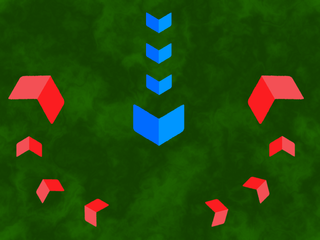
The pincer movement, or double envelopment, is a military maneuver in which forces simultaneously attack both flanks (sides) of an enemy formation. This classic maneuver has been important throughout the history of warfare.
In modern use, the order of battle of an armed force participating in a military operation or campaign shows the hierarchical organization, command structure, strength, disposition of personnel, and equipment of units and formations of the armed force. Various abbreviations are in use, including OOB, O/B, or OB, while ORBAT remains the most common in the United Kingdom. An order of battle is distinct from a table of organisation, which is the intended composition of a given unit or formation according to the military doctrine of its armed force. Historically, an order of battle was the order in which troops were positioned relative to the position of the army commander or the chronological order in which ships were deployed in naval situations.

Trench warfare is a type of land warfare using occupied lines largely comprising military trenches, in which combatants are well-protected from the enemy's small arms fire and are substantially sheltered from artillery. It became archetypically associated with World War I (1914–1918), when the Race to the Sea rapidly expanded trench use on the Western Front starting in September 1914.
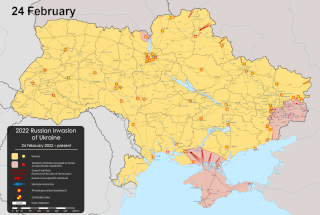
An invasion is a military offensive of combatants of one geopolitical entity, usually in large numbers, entering territory controlled by another similar entity, generally with the objective of either: conquering; liberating or re-establishing control or authority over a territory; forcing the partition of a country; altering the established government or gaining concessions from said government; or a combination thereof. An invasion can be the cause of a war, be a part of a larger strategy to end a war, or it can constitute an entire war in itself. Due to the large scale of the operations associated with invasions, they are usually strategic in planning and execution. Not every military offense with the goal to capture territory or remove a government is an invasion.

Operation Dragoon was the code name for the landing operation of the Allied invasion of Provence on 15 August 1944. Although initially designed to be executed in conjunction with Operation Overlord, the Allied landing in Normandy, a lack of available resources led to a cancellation of the second landing. By July 1944 the landing was reconsidered, as the clogged-up ports in Normandy did not have the capacity to adequately supply the Allied forces. Concurrently, the High Command of the French Liberation Army pushed for a revival of the operation that would include large numbers of French troops. As a result, the operation was finally approved in July to be executed in August.
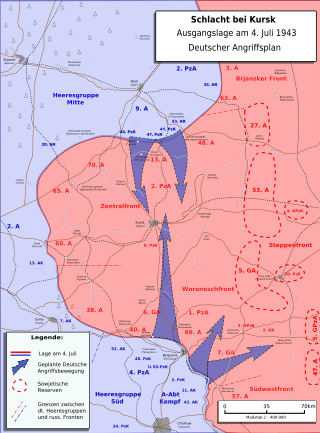
A salient, also known as a bulge, is a battlefield feature that projects into enemy territory. The salient is surrounded by the enemy on multiple sides, making the troops occupying the salient vulnerable. The opponent's front line that borders a salient is referred to as a re-entrant – that is, an angle pointing inwards. A deep salient is vulnerable to being "pinched off" through the base, and this will result in a pocket in which the forces in the salient become isolated and without a supply line. On the other hand, a breakout of the forces within the salient through its tip can threaten the rear areas of the opposing forces outside it, leaving them open to an attack from behind.

The Burma campaign was a series of battles fought in the British colony of Burma. It was part of the South-East Asian theatre of World War II and primarily involved forces of the Allies against the invading forces of the Empire of Japan. Imperial Japan was supported by the Thai Phayap Army, as well as two collaborationist independence movements and armies. Nominally independent puppet states were established in the conquered areas and some territories were annexed by Thailand. In 1942 and 1943, the international Allied force in British India launched several failed offensives to retake lost territories. Fighting intensified in 1944, and British Empire forces peaked at around 1 million land and air forces. These forces were drawn primarily from British India, with British Army forces, 100,000 East and West African colonial troops, and smaller numbers of land and air forces from several other Dominions and Colonies. These additional forces allowed the Allied recapture of Burma in 1945.

The Western Desert campaign took place in the deserts of Egypt and Libya and was the main theatre in the North African campaign of the Second World War. Military operations began in June 1940 with the Italian declaration of war and the Italian invasion of Egypt from Libya in September. Operation Compass, a five-day raid by the British in December 1940, was so successful that it led to the destruction of the Italian 10th Army over the following two months. Benito Mussolini sought help from Adolf Hitler, who sent a small German force to Tripoli under Directive 22. The Afrika Korps was formally under Italian command, as Italy was the main Axis power in the Mediterranean and North Africa.

The Battle of Gazala was fought during the Western Desert Campaign of the Second World War, west of the port of Tobruk in Libya, from 26 May to 21 June 1942. Axis troops of the Panzerarmee Afrika consisting of German and Italian units fought the British Eighth Army composed mainly of British Commonwealth, Indian and Free French troops.
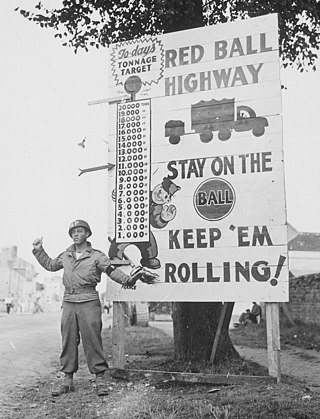
The Red Ball Express was a famed truck convoy system that supplied Allied forces moving quickly through Europe after breaking out from the D-Day beaches in Normandy in 1944. To expedite cargo shipment to the front, trucks emblazoned with red balls followed a similarly marked route that was closed to civilian traffic. The trucks also had priority on regular roads.

The Siegfried Line campaign was a phase in the Western European campaign of World War II, which involved actions near the German defensive Siegfried Line.

Encirclement is a military term for the situation when a force or target is isolated and surrounded by enemy forces. The situation is highly dangerous for the encircled force. At the strategic level, it cannot receive supplies or reinforcements, and on the tactical level, the units in the force can be subject to an attack from several sides. Lastly, since the force cannot retreat, unless it is relieved or can break out, it must fight to the death or surrender.
Interior lines is a military term, derived from the generic term line of operation or line of movement. The term "interior lines" is commonly used to illustrate, describe, and analyze the various possible routes (lines) of logistics, supply, recon, approach, attack, evasion, maneuver, or retreat of armed forces. Interior line strategies are based on the fact that lines of movement and communication within an enclosed area are shorter and safer than those on the outside. As the area held by a defensive force shrinks, the interior line advantage held by the defensive force increases.

Military logistics is the discipline of planning and carrying out the movement, supply, and maintenance of military forces. In its most comprehensive sense, it is those aspects or military operations that deal with:

Operation Chastity was a World War II plan by the Allies to seize Quiberon Bay, France, enabling the construction of an artificial harbor to support Allied operations in Northern France in 1944.
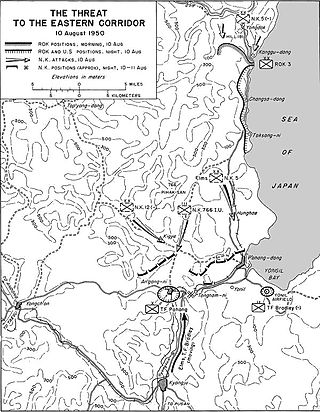
The 766th Independent Infantry Regiment was an elite light infantry unit of North Korea's Korean People's Army (KPA) that existed briefly during the Korean War. It was headquartered in Hoeryong, North Korea, and was also known as the 766th Unit. Trained extensively in amphibious warfare and unconventional warfare, the 766th Regiment was considered a commando unit. The regiment was trained to conduct assaults by sea and then to lead other North Korean units on offensive operations, to infiltrate behind enemy lines, and to disrupt enemy supplies and communications.
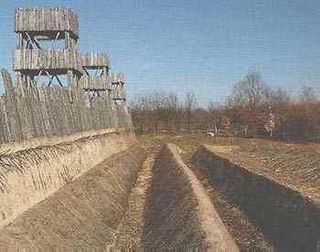
Investment is the military process of surrounding an enemy fort with armed forces to prevent entry or escape. It serves both to cut communications with the outside world and to prevent supplies and reinforcements from being introduced.

Logistics in the Battle of Pusan Perimeter during the Korean War played a decisive role in the battle. Efficient logistics, the management of personnel and materiel, supported United Nations (UN) supply lines while the North Koreans' routes of supply were steadily reduced and cut off. UN logistics improved throughout the Battle of Inchon and the defeat of the North Korean army at Pusan.
Logistics in World War I was the organising and delivery of supplies to the armed forces of World War I.

The history of military logistics goes back to Neolithic times. The most basic requirements of an army are food and water. Early armies were equipped with weapons used for hunting like spears, knives, axes and bows and arrows, and were small due to the practical difficulty of supplying a large number of soldiers. Large armies began to appear in the Iron Age. Animals such as horses, oxen, camels and even elephants were used to carry supplies. Food, water and fodder for the animals could usually be found or purchased in the field. The Roman Empire and Maurya Empire in India built networks of roads, but it was far less expensive to transport by sea than by road. After the fall of the Western Roman Empire in the fifth century there was the shift in Western Europe away from a centrally organised army.

















